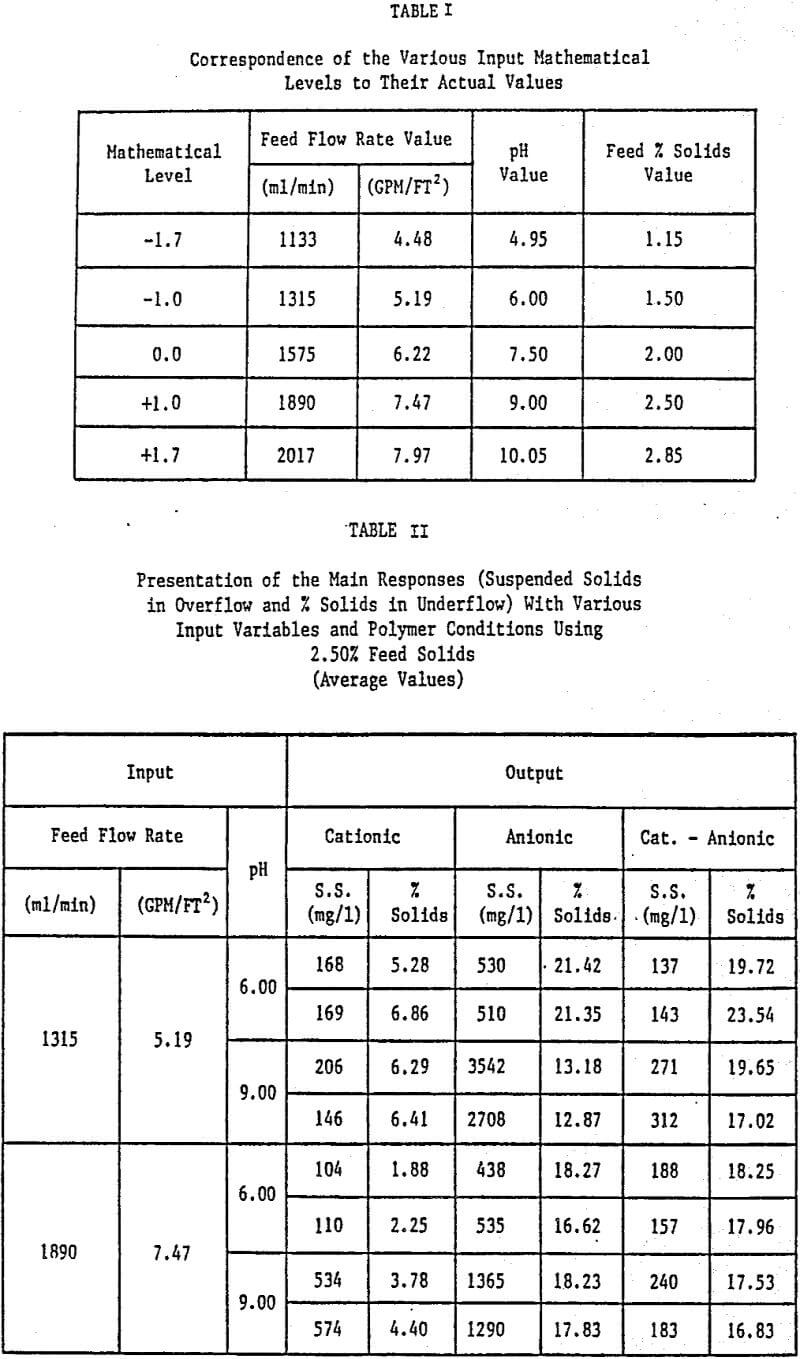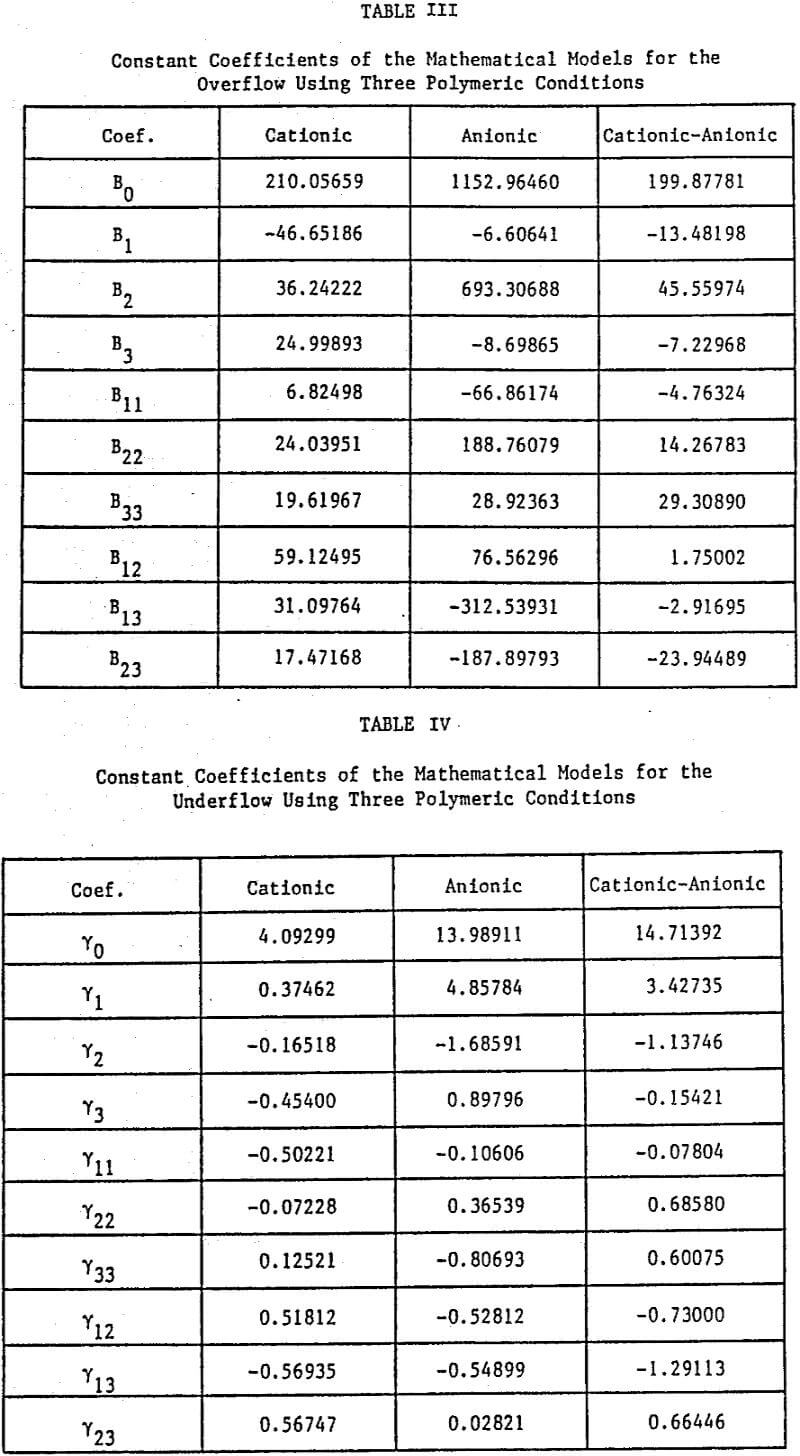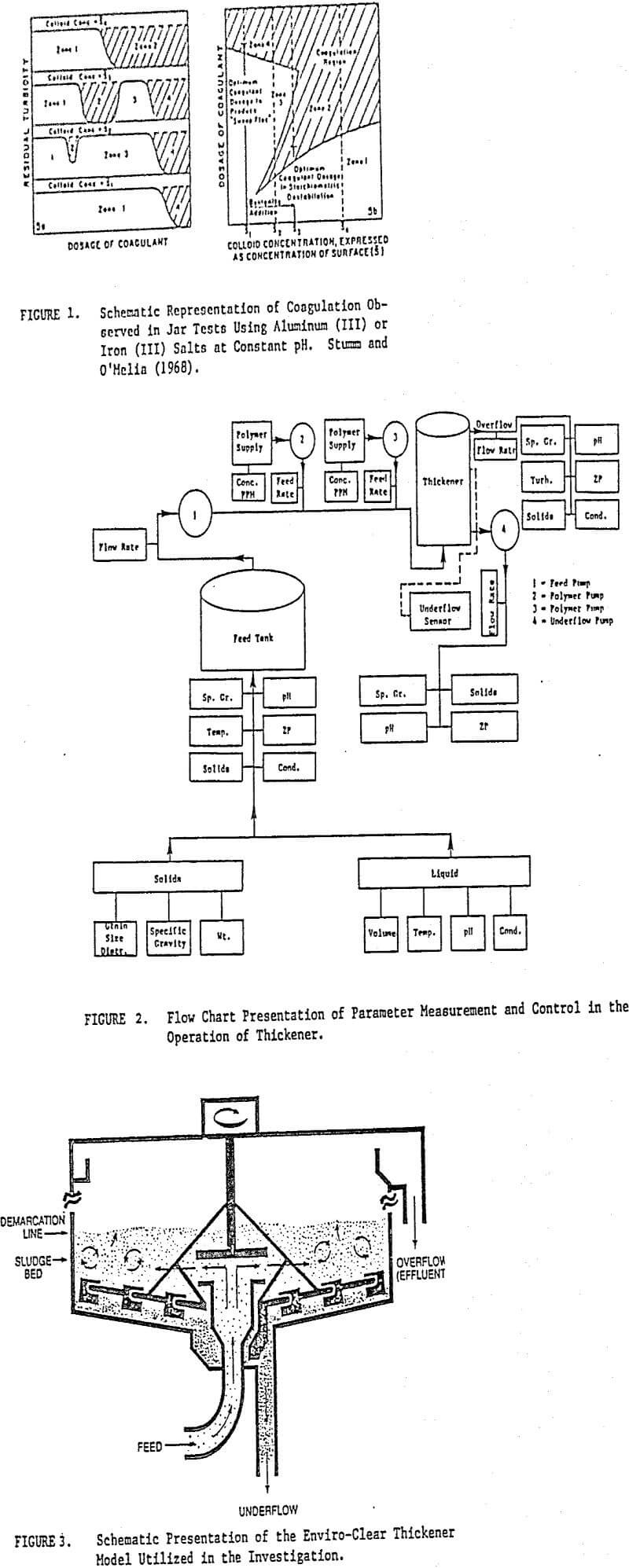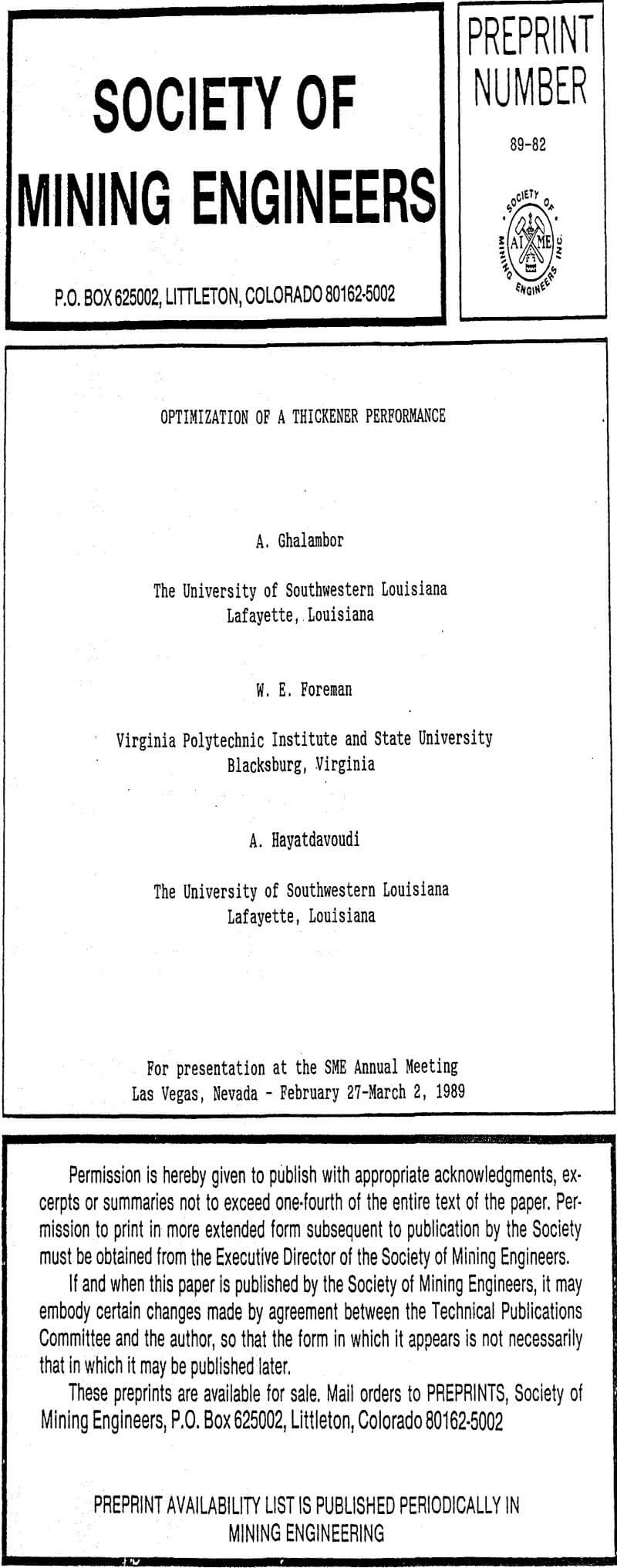The results of this study can be shown as counter plots. Due to the variety of experimental runs and generation of numerous plots it would be beyond the limits of this paper to discuss all of the cases. Therefore, the discussion will be based on the plots given in Ghalambor (1980), and only a few will be presented here (figures 4-9). The section will be divided into two subsections; the overflow response and the underflow response. The effect of feed pH, feed flow rate, and feed percent solids for each of the polymeric conditions will be discussed.
The cationic polymer neutralized the surfaces of the clay particles and formation of flocs began immediately. However, bridging did not occur and the flocs remained small, A sludge bed formed after a few minutes. Due to the similarity of charge between the particles and the polymer, bridging did not occur. This affected the formation of a sludge bed in the thickener which was never fully developed. In the case of the combination polymer, the cationic polymer pump was set on flow line ahead of the anionic polymer pump. The cationic polymer first neutralized the surface charges of the clay particles and then the anionic polymer, by bridging mechanism, causing flocculation.
- The static settling tests on kaolinite-water suspensions used cationic, anionic, and cationic-anionic polymers as settling aids. These tests were conducted to determine the thickening capacity of kaolinite slurries. It was discovered that kaolinite suspensions over 5.0% solids, although separated by the combination polymers, were not separated by a single polymer.
- Continuous separation tests of kaolinite-water suspensions in the laboratory thickener showed that a common maximum separation tolerance was less than 5.0% feed solids. With a safety factor, the maximum feed solids concentration was assigned as 3.0% for this study.
- Six (6) mathematical models were developed; two for each polymeric condition (one for overflow and one for underflow). A contour plot was produced for each level of the three levels of each of the three variables at each of the three polymeric conditions. The contour plots show the regions of different quality (lower & higher solids content) in overflow and underflow.
- The cationic polymer changed the sign of the charges of the particles in the overflow samples from negative to positive, but the underflow samples remained unchanged. The following statements can be made when cationic polymer is used:
a. In conditions when the feed flow rate must be held constant, the control emphasis should be placed on the measurement and adjustment of feed pH and feed solids concentration.
b. In conditions when the feed pH must be held constant, the control emphasis should be placed on the feed solids with weaker control on the feed flow rate for better quality overflow and on both feed flow rate and feed solids concentration for better quality underflow. Low feed pH produced better results.
c. In conditions when the feed solids concentrations must be held constant, the control emphasis should be placed on the feed flow rate and feed pH to produce a better quality overflow and underflow. Higher feed solids levels produced better results. In general, this condition is more desirable for overflow quality than the condition (a) or condition (b). - The anionic polymer did not affect the sign of the surface charges of either the particles in the overflow or the solids in the underflow. Observations, based on changing the input variables to obtain a better quality overflow and underflow, produced the following control schemes with the anionic polymer:
a. In conditions when the feed flow rate must be held constant, the control emphasis should be placed on the feed pH for the production of better quality overflow (low flow rates more desirable) and on the feed solids concentration for better quality underflow (high flow rates more desirable) and on the feed solids concentration for better quality underflow (high flow rates more desirable).
b. In conditions when the feed pH must be held constant, the control emphasis should be placed on the feed flow rate and feed solids concentrations, for the production of better quality overflow (low pH levels more desirable) and on the feed solids concentrations, for the production of better quality underflow (low pH levels more desirable). In general, this condition produced better overall results than the condition (a) or (c).
c. In conditions when the feed solids concentration must be held constant, the control emphasis should be placed on the feed pH for the production of better quality overflow and underflow (high solids levels more desirable). - The combination polymer (i.e. applying both the cationic and anionic polymers simultaneously) did not change the sign of the surface charges of the particles in the overflow and underflow. Observations, based on changing the input variables in obtaining a better quality overflow and underflow, produced the following control schemes with the combination of cationic-anionic polymer:
a. In conditions when the feed flow rate must be held constant, the control emphasis should be placed on the feed pH for the production of better quality overflow (average flow rates more desirable) and on the feed solids concentration for the production of better quality underflow (low flow rates more desirable).
b. In conditions when the feed pH must be held constant, the control emphasis should be placed on the feed flow rate and feed solids concentrations for the production of better quality overflow (low pH levels more desirable) and on the feed solids concentration for the production of better quality underflow (low pH levels more desirable).
c. In conditions when the feed solids concentration must be held constant the control emphasis should be placed on the feed pH and feed flow rate for the production of better quality overflow and underflow (high solids levels more desirable). In general, this condition produced the better overall results than those in condition (a) or condition (b). - In most cases, a decision has to be made by the operator whether more attention should be given to the overflow or underflow, based on the physical condition of the plant. Although this investigation did not have as an objective a study of the best polymeric conditions or their economical merits, it has been, concluded that the combination polymer gave the best quality overflow and underflow. For this polymeric condition, changes in the feed solids concentration is the most sensitive factor in the maintenance of the overflow and underflow quality. To remedy this situation, the feed flow rate should be closely controlled with some lesser emphasis on the control of feed pH.




